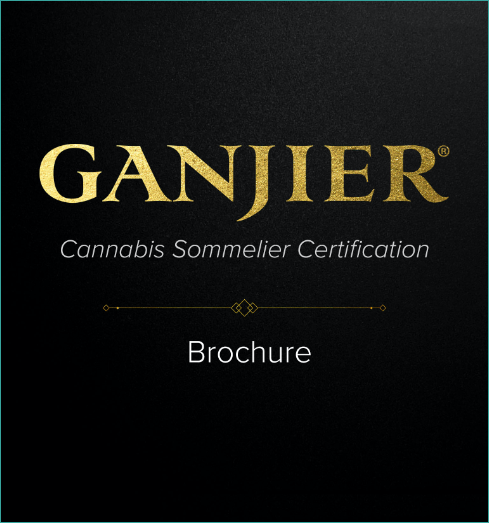Slowly cultivated throughout the centuries and forged in the fires of prohibition, the culture that surrounds modern day cannabis is anything but familiar to the uninitiated.
Throughout the years, the cannabis community has developed a unique language that is all their own. Creative expression, combined with the need to stay below the radar, produced words and expressions that can be familiar to those “in the know.”
Yet as cannabis continues to make its way into the mainstream, a standardized language that reflects the true nature of cannabis needs to be created – a language everyone can understand. This involves keeping a posture that both honors the folk wisdom that has been passed down through the cannabis culture AND makes sure that we speak accurately about cannabis quality and provide the highest level of service.
Ganjier is here to teach you how to do that.
So much cannabis slang
To say that the slang being used to talk about cannabis is robust would be a serious understatement; however, even within the cannabis community, the words that are used to describe cannabis are different depending on which part of the world you are in.
Too often words like “fire,” “hybrid,” and “strain” are used to bring distinction to products in the cannabis market. These words carry a lot of meaning in the cannabis culture; however, they also fail to speak accurately about cannabis or define any characteristic that speaks to quality.
From a cultural perspective, slang is really fun. However, when we are looking to legitimize cannabis on a global scale, bring in new consumers, and create a standard for cannabis quality, we need to use a language that transcends region.
We need to create a language that will allow us to speak accurately about cannabis in a way that everyone can understand; therefore, the first step toward is to properly define our terms.
Indica and Sativa Are Basic
It seems like we learn something new about cannabis everyday, and, subsequently, we learn that we got something wrong.
Being wrong is part of the process, but it becomes a problem when we refuse to move forward and choose to stay locked into ideas that have been proven to be incorrect.
You don’t have to understand much about cannabis to know that people like to use “Sativa,” “Indica,” and “Hybrid” to organize their cannabis varieties. A lot of people also use these terms to talk about the effects of cannabis. Sativas are said to be uplifting, Indicas are sedating, and Hybrids are somewhere in the middle.
These classifications are easy to understand, and thus many believe they serve as a great entry point to help people navigate the market; however, they do not accurately reflect the biology of the plant, the diversity of the effects within cannabis, or give any hint as to the quality of the plant. Thus, simplifying cannabis down to these 3 classifications is actually incorrect, and it’s time to move on.
From a botany perspective, Indica and Sativa are terms used to classify species of cannabis – not the effects of cannabis. In short, Sativa plants are hemp varieties of cannabis, and Indica plants are the varieties consumed for their psychoactive properties – both species having broad and narrow-leaf varieties. These varieties offer a huge spectrum of effects – not just uplifting and sedative.
Cannabis offers a complex chemistry. There are literally hundreds of active compounds in a cannabis flower that contribute to the effect. Based on the ratio of these compounds, a consumer can experience a wide variety of effects. Also, considering that everyone has a unique endocannabinoid system, every person is going to experience cannabis differently.
It is clear that separating cannabis into just two categories, with a third being “in the middle” is not the best way forward.
Instead of continuing to use language that limits cannabis’ effects into two generic categories, we need to start using language that can hold the complexity of the plant. Using accurate terminology for cannabis is not only the first step toward appreciating the complexities of the plant, it is also the first step toward creating a universal language for cannabis quality and the cannabis sommelier. Cannabis education is much more complex than people realize.
It’s possible that cannabis culture might not ever fully leave Indica and Sativa behind, but, if we are going to elevate the conversation about cannabis, the cannabis industry needs to do everything it can to push correct terminology forward. Indica and Sativa can be a bridge that helps people create meaning of their cannabis experience; however, this should just be the starting point to help people move into a new understanding that includes cannabinoid and terpene profiles, accurate quality markers, an understanding of the plant’s effects, and much more.
Stop calling it a strain
Another common cannabis term that is in need of an update is “strain.”
Most people use strain to reference a cannabis plant’s name – like Blue Dream or Tangie; however, strain is not a correct term that is used in plant botany. Strain is typically used in microbiology and virology to reference genetic variants within an organism – like a flu strain.
“Cultivar” is the correct term when referencing a plant varietal. Cultivar is short for cultivated variety. In other words, it implies that humans were involved in the creation of the plant. A cultivar is given a new name when it develops unique characteristics that distinguish itself from other cultivars. For example, Blue Dream earned its name because it has unique genetics, chemistry, and physical characteristics.
It is important to note that the name of a cultivar does not speak to the quality of the plant. Just because you find your favorite cultivar at a cannabis dispensary does not mean that it is going to be a great product. Quality is a reflection of the grower just as much as it is a reflection of the genetics.
It takes a lot of skill to develop stable genetics within a cultivar, and it takes a lot of work to make sure that it is grown in a way that allows the plant to reach its full genetic potential. Amongst other things, a grower has to make sure it gets the proper nutrition and light. They have to make sure you harvest when the trichomes are at their most ripe – a nice milky white, and they have to make sure to dry and cure it properly.
Don’t let the name of the cultivar fool you! There is a farmer behind every strain, and the quality of the product is a reflection of that person. This is another reason why cultivar is a more suitable term than strain. Besides being the proper scientific verbiage, using cultivar implies that a person was involved in the creation of the product.
In the future, we may even get to a point where a cultivar’s name is legally tied to a cultivar. As of now, there are no limitations on what a grower can call their cultivar, and, considering that the quality of a cultivar reflects its environment (terroir) and the skill of the grower, it would make sense that growers would want to bring distinction to their harvest.
Just like the wine world uses terms like “Champagne” to bring distinction to certain sparkling white wines, the cannabis industry will eventually get to a point where the skill and location of a grower is reflected in the name of a cultivar. We are not there yet; however, creating a standardized language that correctly reflects cannabis is a great first step toward getting there!
Ganjier Will Teach You How To Speak Cannabis Correctly
Standardizing the language around cannabis is not going to be easy. Like learning a new language, we are going to be required to educate ourselves on the correct terms and practice using them in real life scenarios.
We probably won’t need to abandon everything we know about cannabis, and there will always be a place for slang amongst friends; however, if we really want to push cannabis into the future and speak to the quality of a plant, we need to make sure that we speak about cannabis in a way that accurately reflects the plant.
The internet can be great for a lot of things; however, it can also be overwhelming when you are trying to research something as complex as cannabis. Sure, it is easy to find information about cannabis, but how can we know what information is authoritative and what information is just plain wrong? Can we really trust the all-powerful algorithms to point the way?
A trained guide is needed to help point people in the right direction – a person that understands where cannabis has come from, where it is going, and how to gain the most value today.
This is the work of the Ganjier cannabis sommelier. We are excited to help you speak cannabis correctly in order to serve the community, the plant, and consumers in greater and more beneficial ways.
Enrollment for the first certified Ganjier class will open in Winter 2020. Capacity is limited. Join the interest list if you want to be among the first Ganjiers to transform the cannabis industry as we know it.


